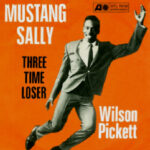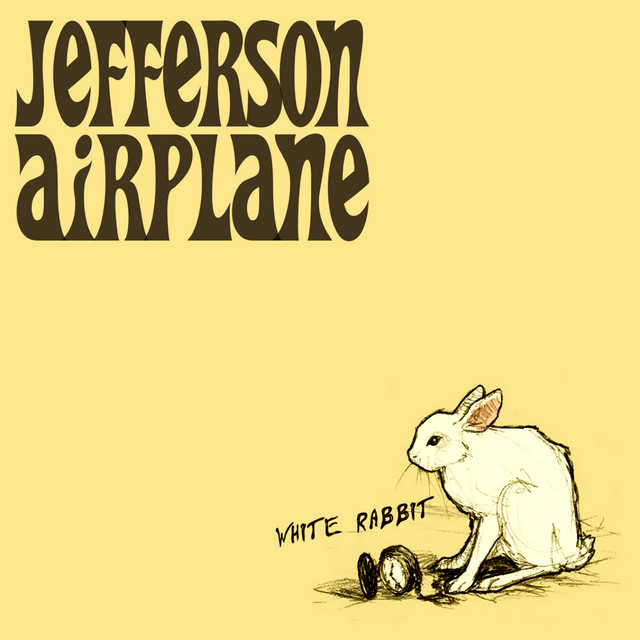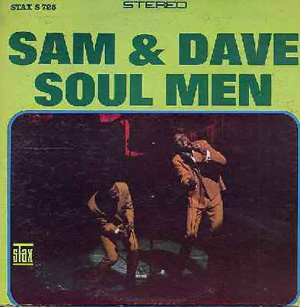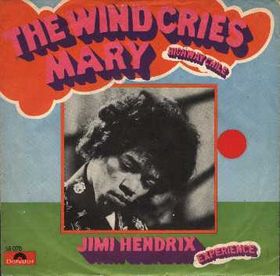 Few songs in the history of American rhythm and blues have the instant recognition, irresistible groove, and enduring charm of “Mustang Sally.” Originally written by Mack Rice but made immortal by Wilson Pickett in 1966, this fiery slice of Southern soul remains a staple of bar bands, wedding dance floors, jukeboxes, and movie soundtracks nearly six decades after its release. It’s a song that manages to be both playful and powerful, delivering a sly lyrical story over one of the tightest R&B arrangements ever put to tape. To fully appreciate its staying power, we need to dig into the song’s origins, the cultural landscape of the 1960s, Pickett’s commanding vocal style, and the countless ways “Mustang Sally” has taken on a life of its own in the years since.
Few songs in the history of American rhythm and blues have the instant recognition, irresistible groove, and enduring charm of “Mustang Sally.” Originally written by Mack Rice but made immortal by Wilson Pickett in 1966, this fiery slice of Southern soul remains a staple of bar bands, wedding dance floors, jukeboxes, and movie soundtracks nearly six decades after its release. It’s a song that manages to be both playful and powerful, delivering a sly lyrical story over one of the tightest R&B arrangements ever put to tape. To fully appreciate its staying power, we need to dig into the song’s origins, the cultural landscape of the 1960s, Pickett’s commanding vocal style, and the countless ways “Mustang Sally” has taken on a life of its own in the years since.
The Birth of “Mustang Sally”
The story of “Mustang Sally” actually begins not with Wilson Pickett, but with Mack Rice, a songwriter and performer who was part of the Detroit soul scene in the early 1960s. Rice originally wrote the song in 1965 as “Mustang Mama,” inspired by a gift a friend planned to give his girlfriend: a brand-new Ford Mustang. The Mustang, introduced by Ford in 1964, was not just a car—it was a cultural phenomenon, symbolizing youthful independence, speed, and a certain rebellious spirit. Rice’s playful lyric captured that excitement, warning the girlfriend that if she got behind the wheel of this sleek new machine, she’d better slow down and behave.
Rice recorded the song himself, and it achieved modest regional success. But it wasn’t until Wilson Pickett, one of the defining voices of Southern soul, heard the track that it would reach its full potential. Pickett, who was working with the legendary house band at Fame Studios in Muscle Shoals, Alabama, saw something in Rice’s tune. He suggested changing “Mustang Mama” to “Mustang Sally,” a move that gave the song a more specific character and an irresistible alliteration. Pickett’s version, released on Atlantic Records in 1966, turned a clever novelty into an R&B powerhouse.
Wilson Pickett: The Wicked Voice of Soul
By the time he recorded “Mustang Sally,” Wilson Pickett was already a major figure in soul music. Born in Alabama and raised singing gospel, Pickett had made a name for himself with hits like “In the Midnight Hour,” “Land of 1,000 Dances,” and “634-5789 (Soulsville, U.S.A.).” His voice was raw, gritty, and electrifying—a perfect blend of church-trained power and streetwise attitude. Pickett didn’t just sing songs; he inhabited them, delivering every line with a mixture of swagger and urgency.
On “Mustang Sally,” Pickett is at his absolute best. His vocal performance is a masterclass in controlled intensity. He teases the verses, leaning into the story of Sally’s fast-driving ways, before exploding into the unforgettable chorus: “Ride, Sally, ride!” Each shout of encouragement feels like a command, a playful dare, and a celebration all at once. It’s no wonder the song became a showcase for his dynamic stage presence, allowing him to vamp, improvise, and interact with audiences night after night.
The Muscle Shoals Magic
Part of what makes “Mustang Sally” so irresistible is its Muscle Shoals sound, crafted by one of the greatest rhythm sections in music history. The house band at Fame Studios—later known as the Swampers—consisted of guitarist Jimmy Johnson, bassist David Hood, drummer Roger Hawkins, and keyboardist Spooner Oldham. These musicians had an uncanny ability to blend Southern grit with urban sophistication, creating a groove that was tight but never stiff.
The arrangement of “Mustang Sally” is deceptively simple: a driving backbeat, punchy horn stabs, and a steady bass line that locks everything in place. But the chemistry between the players gives it a unique energy. The horns answer Pickett’s vocal lines like a Greek chorus, while the rhythm section keeps the song moving with relentless momentum. It’s a perfect marriage of R&B and rock ’n’ roll, a sound that would influence everyone from the Rolling Stones to Aretha Franklin.
Lyrics with a Wink and a Smile
At first glance, the lyrics of “Mustang Sally” tell a straightforward story: a man warns his girlfriend, Sally, about the trouble she’s going to cause with her new Mustang. But like many great soul songs, there’s more going on beneath the surface. The car becomes a metaphor for freedom and independence. Sally is not a passive character; she’s in the driver’s seat, literally and figuratively, and the narrator’s warnings carry a mix of admiration and anxiety.
Lines like “All you wanna do is ride around, Sally” capture a sense of playful frustration. The narrator knows he can’t control her, and that’s exactly what makes her so appealing. The repeated refrain of “ride, Sally, ride” becomes both an instruction and an acknowledgment of her unstoppable spirit. In the context of the mid-1960s—a time when gender roles were beginning to shift and women were asserting greater independence—the song can even be read as a sly celebration of female agency.
Chart Success and Cultural Impact
Released as a single in late 1966, Pickett’s “Mustang Sally” became an instant hit. It reached No. 6 on the Billboard R&B chart and cracked the Top 40 on the pop chart, cementing Pickett’s status as one of Atlantic Records’ most reliable hitmakers. But its impact went far beyond the charts. The song quickly became a staple of soul and R&B radio, a guaranteed crowd-pleaser at live shows, and a favorite of bar bands across the country.
Over the years, “Mustang Sally” has appeared in countless films, television shows, and commercials. One of its most memorable uses came in the 1991 film The Commitments, where it served as the centerpiece of a story about an Irish soul band. The movie introduced the song to a new generation, and the Commitments’ spirited performance became a hit in its own right. From wedding receptions to karaoke nights, “Mustang Sally” remains one of those rare songs that can bring people of all ages to the dance floor.
Cover Versions and Legacy
Part of the song’s longevity comes from its adaptability. Artists across genres have taken a crack at “Mustang Sally,” each bringing their own flavor to the tune. Buddy Guy, Bruce Springsteen, John Lee Hooker, and even alternative acts have performed it live, proving its universal appeal. Few songs can seamlessly fit into a blues set, a rock concert, or a Motown revue, but “Mustang Sally” pulls it off with ease.
Wilson Pickett’s version, however, remains the gold standard. His combination of raw energy and precise musicianship set a template that few have matched. Every cover, no matter how inventive, inevitably pays homage to that 1966 recording. It’s a testament to the enduring power of Pickett’s interpretation and the timelessness of the Muscle Shoals sound.
A Car, a Woman, and the American Dream
Beyond its musical brilliance, “Mustang Sally” taps into deeper cultural currents. The Ford Mustang was more than just a car; it was a symbol of the American dream, representing freedom, mobility, and a certain rebellious cool. By pairing the car with a character like Sally—a woman who refuses to be tamed—the song captures the restless energy of the 1960s. It’s about speed, desire, and the thrill of the open road, but it’s also about the changing roles of women and men in a rapidly shifting society.
In this way, “Mustang Sally” functions as both a snapshot of its era and a timeless anthem. Its story of love, independence, and a fast car resonates whether you’re a teenager in 1966 or someone discovering soul music for the first time today.
Why It Still Matters
More than half a century after its release, “Mustang Sally” continues to inspire musicians and delight audiences. It remains a staple of classic soul radio, a reliable highlight in Pickett retrospectives, and a favorite of cover bands around the world. Its appeal lies in its perfect balance: simple but not simplistic, playful yet powerful, rooted in its time but endlessly relevant.
The song also serves as a reminder of the genius of Wilson Pickett and the Muscle Shoals musicians. Together, they created a sound that bridged racial and cultural divides, bringing Southern soul to mainstream audiences and influencing generations of rock and R&B artists. Every time someone belts out “Ride, Sally, ride!” in a bar or at a wedding, they’re participating in a tradition that stretches back to those legendary recording sessions in Alabama.
Conclusion: Riding into Eternity
“Mustang Sally” is more than just a song about a car and a free-spirited woman. It’s a celebration of independence, a showcase of one of soul music’s greatest voices, and a testament to the enduring power of rhythm and blues. From Mack Rice’s initial inspiration to Wilson Pickett’s definitive recording, it’s a story of collaboration, creativity, and cultural resonance.
When that unmistakable groove kicks in and Pickett urges Sally to “ride, Sally, ride,” listeners can’t help but feel the pull of the open road and the thrill of a well-tuned engine. Decades after it first roared onto the airwaves, “Mustang Sally” still reminds us to embrace freedom, chase excitement, and maybe, just maybe, take the long way home with the windows down and the music turned up loud.


